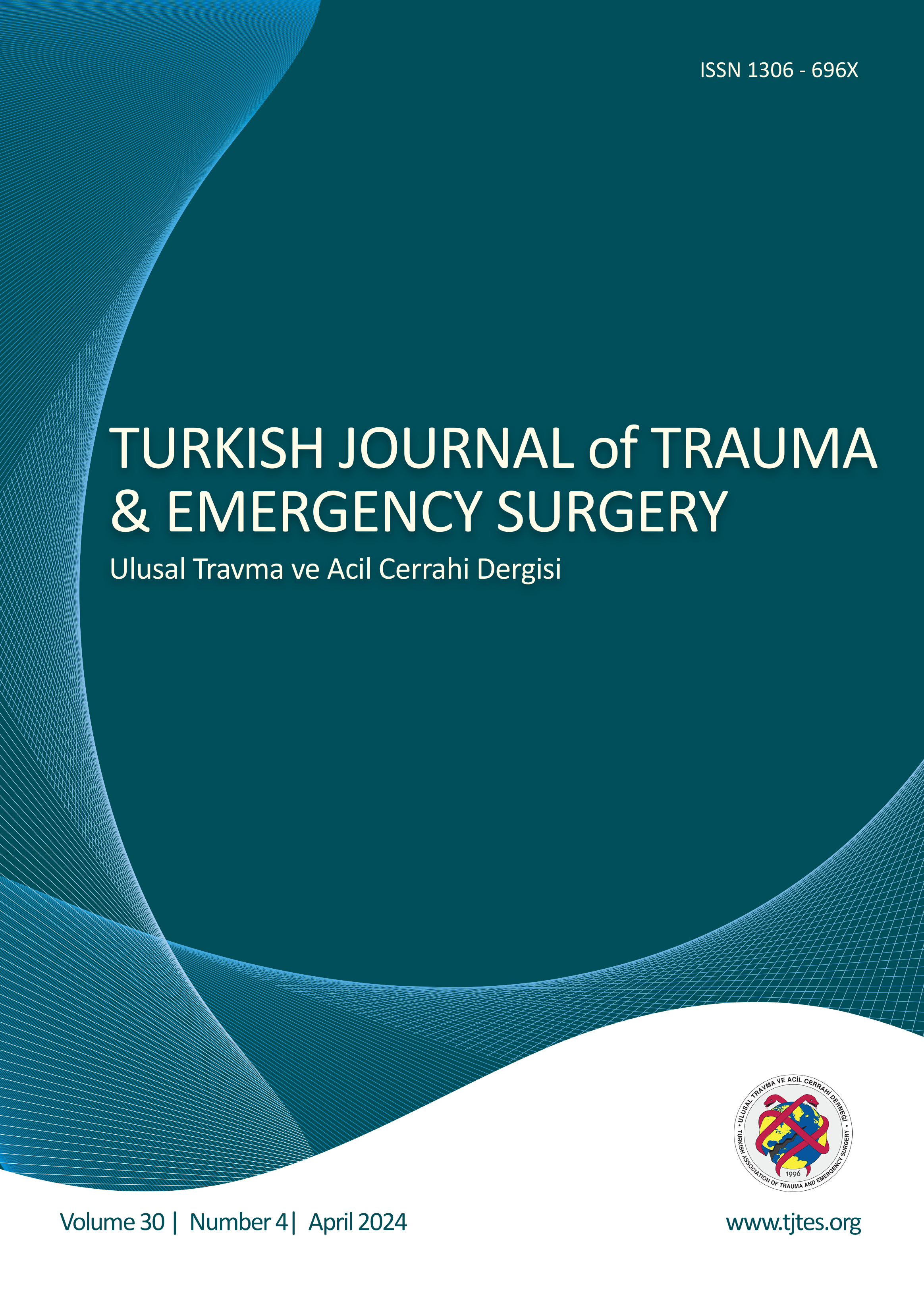Hızlı Arama
Fournier gangreninde debridman sayısını etkileyen faktörler: 36 olguda sonuçlarımız
Cemal Göktaş1, Mehmet Yıldırım2, Rahim Horuz1, Gökhan Faydacı1, Oktay Akça1, Cihangir Ali Çetinel11Dr.Lütfi Kırdar Kartal Eğitim Ve Araştırma Hastanesi, Üroloji Kliniği, İstanbul2Dr.Lütfi Kırdar Kartal Eğitim Ve Araştırma Hastanesi, Genel Cerrahi Kliniği, İstanbul
AMAÇ
Bu çalışmada, tek veya çok sayıda cerrahi debridman gereken Fournier gangreni (FG) hastaları karşılaştırıldı, debridman sayısını etkileyebilecek faktörler araştırıldı.
GEREÇ VE YÖNTEM
Fournier gangreni nedeniyle tedavi edilen 36 hastanın verileri geriye dönük olarak incelendi. Hastalar uygulanan debridman sayısına göre iki gruba ayrıldı (Grup I: tek seans; Grup II: ≥2 seans). Hastalara ait veriler (klinik ve cerrahi veriler, lezyon özellikleri, FG şiddet indeksi, prognoz verileri) gruplar arasında karşılaştırıldı.
BULGULAR
Hastaların ortalama yaşı 55,5 idi ve hepsi erkekti. Grup Ide 21, Grup IIde 15 hasta incelendi. Grup IIde ortalama debridman sayısı 2,2 idi. Genel mortalite oranı %11 olarak saptandı (Grup Ide %4,8, Grup IIde %20; p=0,287). Diyabet en sık karşılaşılan komorbidite idi (%44). Hastaneye başvuruya kadar geçen süre, başvuru sırasında lezyonun boyutu ve FG şiddet indeksi açısından gruplar arasında fark tespit edilmedi. Grup IIde FG şiddet indeksi skorunun tekrarlanan her operasyon öncesinde anlamlı derecede artış gösterdiği saptandı (p<0,05).
SONUÇ
Her ne kadar tek veya çok sayıda debridman uygulanan hastalar arasında debridman sayısını etkileyebilecek anlamlı fark saptanmamışsa da; FG şiddet indeksi, tekrarlanan her debridmanda arttığı tespit edildiği için, ilave debridmanlara karar vermede yardımcı olabilir.
Factors affecting the number of debridements in Fourniers gangrene: our results in 36 cases
Cemal Göktaş1, Mehmet Yıldırım2, Rahim Horuz1, Gökhan Faydacı1, Oktay Akça1, Cihangir Ali Çetinel11Kartal Training And Research Hospital, Urology Department, Istanbul2Kartal Training And Research Hospital, Surgery Department, Istanbul
BACKGROUND
We aimed to evaluate the factors potentially affecting the number of surgical debridements in patients with Fourniers gangrene (FG) who underwent single or multiple operative sessions.
METHODS
We retrospectively reviewed the data of 36 patients with FG. The patients were assigned to one of two groups according to the number of debridements (Group I: single session; Group II: ≥2 sessions). Data of the patients (clinical and surgical data, lesion characteristics, FG severity index, and prognosis) were compared between the groups.
RESULTS
The mean age of the patients was 55.5 years, and all were male. Group I consisted of 21 patients and Group II of 15 patients. The mean number of debridements was 2.2 in Group II. Our overall mortality rate was 11% (Group I: 4.8% vs Group II: 20%; p=0.287). Diabetes was the most common coexistent pathology (44%). Time to admission to the clinic, size of the lesions at admission, and FG Severity Index (FGSI) scores of the groups were similar. In Group II, FGSI scores were found increased before each of the repeated debridement sessions (p<0.05).
CONCLUSION
There was no difference in the clinical data of the patients who required single or multiple debridement sessions; however, FGSI may be useful in deciding repeated debridements, as it was found increased at each repeated session.
Makale Dili: İngilizce




